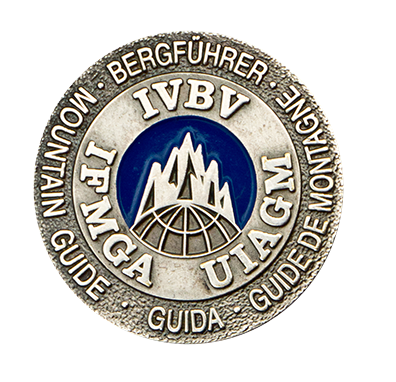Guiding for a living is a challenge in the United States. Yes, we guide because we love the mountains and enabling others to enjoy the mountains. We also guide to make money. The problem is that guide wages are generally low and variable. It is a struggle to make guiding your real job, where you earn enough to support a family and own a house. This creates frustration and a sense of unfairness among many U.S. guides. Although some guide services strive for fair pay and better pay for their guides, the existing system is not working for many professional guides
Some of the problem is due to guiding being a vocation that many people want to get into. This creates a buyer's market, where guides are available for employers to choose from and guides are willing to work for less than in other vocations.
Another reason for low and erratic wages is the variation in guide qualifications. Uncertified guides have variable experience and little standardized training. On the other end of the spectrum, IFMGA guides have qualifications recognized on an international level. An acceptable range of wages to match these levels of guide qualification has not been established.
A third reason for low and erratic wages is lack of wage transparency. Discussing pay among US guides is largely taboo. This may be due to social etiquette that considers salary talk impolite. It may also be due to guide service pressure, where employers instill a do-not-discuss-your-pay ethos. Guide services may argue that discussing pay is problematic because employees don't understand the nuances of the company pay scale. But problems occur when lack of wage transparency masks pay discrimination and unfairness. This pay secrecy is largely to blame for the rampant wage discrepancy against women and people of color in the US. Talking about pay among co-workers is a legal right in the US under the National Labor Relations Act of 1935. The current national trend is toward greater wage transparency. Some professions have addressed and dealt with the problem. Others have not. Most of the US guiding industry has not.
Open discussion of pay can lead to increased fairness and trust of employers. In workplaces where wages become more transparent, adjustments often follow that reduce discrimination and lead to comparable wages for comparable work. Pay transparency can also lead to a greater understanding of what experience and training it takes to earn a higher pay level.
Wage transparency is not straightforward. It requires a strong manager to make the transition and deal with their pay discrepancies and deal with guides who feel entitled to higher pay despite their poor performance. Although transparency may lead to a greater sense of fairness among guides, it may not lead to higher pay. Many guide services struggle to stay afloat–they simply cannot pay their guides more. The question comes down to: will wage transparency make the guiding industry better? Most professional guides agree it would.
Let’s start by talking among ourselves–our co-guides–about what we earn. Be willing to tell what you are paid. Ask others what they are paid. Encourage your employer to make the transition to a wage transparency system. In addition, we could encourage the AMGA to survey guides on their wages. This survey could be modeled after a recent guide wage survey done by the ACMG.
More Reading
Coming Out at Work: What happens when companies stop keeping salaries secret? By Jordan Weissmann, Slate.com.
Guide Wage Survey, by David Lussier, ACMG News, Volume 39, Summer 2013, pages 23-25.
Planet Money, Episode 550: When Salaries Aren’t Secret.

